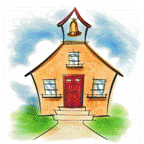The CEC standard 8 Assessments states “Special educators conduct formal and informal assessment of behavior, learning, achievement, and environments to design learning experiences that support growth and development of individuals with exceptional learning needs”. Teachers use several ways to assess student achievement in academic areas. Teachers should document student performance and academic growth. One way to document a student’s academic areas is through informal assessment. Informal assessment are ways to evaluate a student’s performance by using test, quizzes, checklists, running records, portfolios, conferences, and learning logs.
There are many positive and negative effects of informal assessment techniques in the classroom. Informal assessments are used by the classroom teacher to keep track of the students’ in the classroom. Informal assessments are made by the teacher to help with their planning for lessons or just to see where the student is academically.
Positive effects of informal assessments are because they are not standardized they are based on the curriculum the teacher is teaching in the classroom, at the time of the informal assessment. Informal assessments are valued more than formal assessments because the teacher is the one who sees the student day to day, they can make a better judge of their performance. Teachers use informal techniques, such as observations, interviews, and evaluation of performance on exams, students work, and grades. These informal assessments are an ongoing evaluation of the instructional program. These are positive and often quick ways to evaluate student’s progress in the classroom. The techniques used are to provide a history of the student and summarize their information.
Negative effects of informal assessments are the techniques used require full student participation which may become extremely time consuming and difficult. The techniques also tend to be subjective rather than objective. Students with disabilities may have a disadvantage in some of the informal assessment tasks. Teachers must be aware of the different informal assessment and must keep excellent records for each student.
Teachers use informal assessments to plan for upcoming lessons and to see what modifications should be made. Each student could be at a different level shown by the informal assessment given. The informal assessment documents the student’s progress and also provides the student’s current levels and performances.

